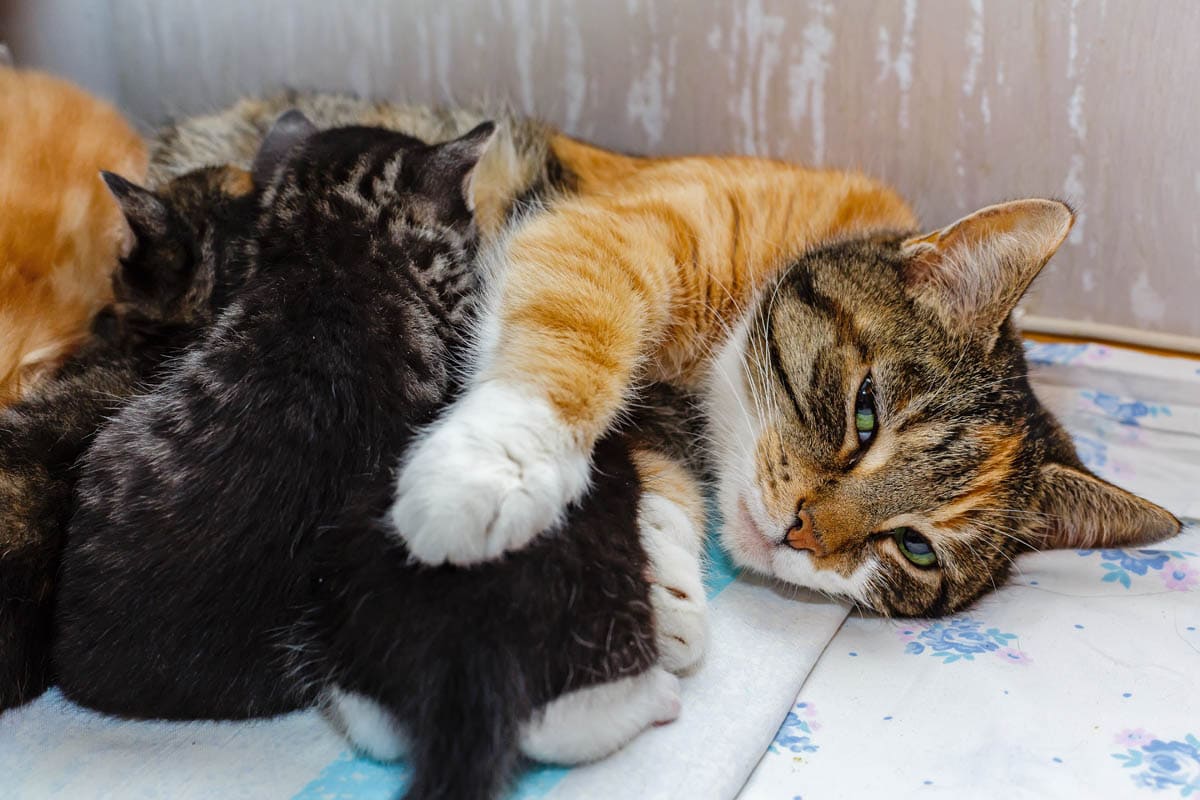What is eclampsia?
Eclampsia (milk fever, puerperal tetany) is a serious, life-threatening condition that occurs in late pregnancy or birth as a result of blood calcium levels becoming dangerously depleted, leading to low blood calcium levels (hypocalcemia).
If you suspect your cat has eclampsia, immediate veterinary attention is essential. Eclampsia can quickly lead to death.
Causes
- Poor or insufficient diet in the pregnant and lactating queen.
- Poor uptake of calcium by the digestive system.
- Calcium loss due to lactation.
Eclampsia is most commonly seen four weeks after delivery although it can happen earlier or later than this.
Symptoms
- Restlessness
- Neuromuscular irritability such as nervousness, whiskers twitching, facial rubbing, tetany (involuntary muscle contractions)
- Lethargy
- Stiff legged gait
- Panting
- Increased respiration rate
- Loss of appetite
- Fever
- Convulsions
Diagnosis
Your veterinarian will perform a complete physical examination of your cat and obtain a medical history from you. Baseline tests including biochemical profile will reveal lower than normal calcium levels. That along with a recent history of pregnancy/birth will provide a diagnosis of eclampsia in your cat.
Treatment
Emergency
Slow intravenous administration of calcium gluconate.
Maintenance
- Vitamin D assists in the absorption of calcium, and therefore may also be given.
- Once the cat has stabilised, oral administration of calcium gluconate.
- ECG to check for cardiac abnormalities
Prevention
Provide your pregnant cat with a good quality, commercial diet. Supplementing with dietary calcium is not necessary and may, in fact, lead to eclampsia. Supplementing with dietary calcium after birth may be necessary, speak to your veterinarian before you include any dietary supplements to make sure it’s safe.

